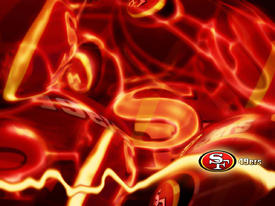DON'T do this when you lift weights!

ninerbuff
Posts: 49,230 Member
Don't LOCK OUT when you lift weights (with the exception of the very last rep of a set). What I mean by that is that it's common for novice and even intermediate lifters to "lock out" at the end of a rep. For example on a squat you start by standing, then squat down and then return to start, but many people will extend up so far up, their knees will "lock out". Now the full weight is no longer being supported by your muscle, but by the joints in your knees and the cartilage as well. This puts undue stress on the joints each time you perform a rep and can cause faster wear and tear on the joint and supporting tissue.
Instead when you approach the end of a rep, their should still be a slight "bend" in the joint to keep the tension on the muscle. This goes with any exercise. Shoulder presses, tricep extensions, bench presses, etc. Part of the reason I haven't suffered from joint deterioration after all these years of lifting is because I didn't "lock out" and made sure the muscle supported what ever weight I was using.
Learn the technique and practice it.
Instead when you approach the end of a rep, their should still be a slight "bend" in the joint to keep the tension on the muscle. This goes with any exercise. Shoulder presses, tricep extensions, bench presses, etc. Part of the reason I haven't suffered from joint deterioration after all these years of lifting is because I didn't "lock out" and made sure the muscle supported what ever weight I was using.
Learn the technique and practice it.
0
Replies
-
Good advice, brotha.0
-
Don't LOCK OUT when you lift weights (with the exception of the very last rep of a set). What I mean by that is that it's common for novice and even intermediate lifters to "lock out" at the end of a rep. For example on a squat you start by standing, then squat down and then return to start, but many people will extend up so far up, their knees will "lock out". Now the full weight is no longer being supported by your muscle, but by the joints in your knees and the cartilage as well. This puts undue stress on the joints each time you perform a rep and can cause faster wear and tear on the joint and supporting tissue.
Instead when you approach the end of a rep, their should still be a slight "bend" in the joint to keep the tension on the muscle. This goes with any exercise. Shoulder presses, tricep extensions, bench presses, etc. Part of the reason I haven't suffered from joint deterioration after all these years of lifting is because I didn't "lock out" and made sure the muscle supported what ever weight I was using.
Learn the technique and practice it.
Common newbie mistake Great post 0
Great post 0 -
Sound advice here! +10
-
Some great advicefor beginner lifters!0
-
Never really thought about or noticed if I have been doing right or wrong. I will certainly pay more attention now. Thanks,0
-
Have heard different schools of thought on this -- yours, by far, makes the most sense. Thanks!!
(you DO want to "lock" on deadlifts though right?? are there exceptions to "not locking out"?)0 -
But if I lock out I'm better able to belt out my manly grunt that impresses the nearby chicas!!!0
-
But if I lock out I'm better able to belt out my manly grunt that impresses the nearby chicas!!!
Yes, we love this, it's like a mating call. However, it works better if every other one is also a yoddle.0 -
I have been lifting weights since back in high school (clearly I have had a fewwwwww breaks in that time), so I'm aware of the fact that your not supposed to lock your joints, and keep your center tight. I was at the gym yesterday asking the instructor to show me an excercise to strengthen my calves. She put me on the leg press, told me to lock out my knees with the front of my foot at the bottom of the plate and then extend my feet. Well, it didn't sound right to lock out my knees... But is that an exception for this excercise?
I just found your other thread with all kinds of tips....Thanks so much!0 -
I have been lifting weights since back in high school (clearly I have had a fewwwwww breaks in that time), so I'm aware of the fact that your not supposed to lock your joints, and keep your center tight. I was at the gym yesterday asking the instructor to show me an excercise to strengthen my calves. She put me on the leg press, told me to lock out my knees with the front of my foot at the bottom of the plate and then extend my feet. Well, it didn't sound right to lock out my knees... But is that an exception for this excercise?
I just found your other thread with all kinds of tips....Thanks so much!
I've always done calf raises with my knees slightly bent because I worry about that. It makes it a bit more difficult to isolate the calf muscle since you might have the desire to put leg strength into it. But I've always felt it was safer.0 -
The starting position of a deadlift is from the floor, or if you're doing rack deadlifts from the knee bent position. The top of the movement is a standing position and your knees would still be slightly bent, but your back should be straight. I don't think I would call this a "lock out" position since the torso region isn't really a joint per se, but you don't want to lean back at the top of the movement.Have heard different schools of thought on this -- yours, by far, makes the most sense. Thanks!!
(you DO want to "lock" on deadlifts though right?? are there exceptions to "not locking out"?)0 -
No. You should still have a slight bend in the knee. If you've ever done seated calf raises, your knees are bent at a 90 degree angle and you can still work the calves. No different here. The error I see is when people "push" the weight up light a mini leg press. Just use you calves to move the weight.I have been lifting weights since back in high school (clearly I have had a fewwwwww breaks in that time), so I'm aware of the fact that your not supposed to lock your joints, and keep your center tight. I was at the gym yesterday asking the instructor to show me an excercise to strengthen my calves. She put me on the leg press, told me to lock out my knees with the front of my foot at the bottom of the plate and then extend my feet. Well, it didn't sound right to lock out my knees... But is that an exception for this excercise?
I just found your other thread with all kinds of tips....Thanks so much!0 -
bump for later0
-
Do squats like these guys and you'll be fine:
 0
0 -
GREAT advice. i've been working out for years and have been making this mistake. thanks!0
-
thanks for the tip.
how about on over head presses? i've read youre supposed to lock everything up at the top of the lift? like elbows, shoulders, back, glutes, knees, etc.0 -
No. Especially elbows.thanks for the tip.
how about on over head presses? i've read youre supposed to lock everything up at the top of the lift? like elbows, shoulders, back, glutes, knees, etc.0 -
Great advice!0
-
Another way to think about it is concentrate on the muscles that are working in the exercise and make sure you keep control of the movement throughout the entire range of motion. Locking out is actually a loss of control. If you are in control of the movement, you can completely straighten the limb in most cases without ever "locking" the joint.
I don't worry that much about it with my clients because the ones who do it are mostly newbies who aren't lifting enough weight to really do damage. We focus on kinesthetic awareness, muscle control, and joint stabilization, which takes care of the problem.0 -
This is a great add on to the post. Many people can "move" a weight through the motion, but many don't actually know how to "feel" the movement.Another way to think about it is concentrate on the muscles that are working in the exercise and make sure you keep control of the movement throughout the entire range of motion. Locking out is actually a loss of control. If you are in control of the movement, you can completely straighten the limb in most cases without ever "locking" the joint.
I don't worry that much about it with my clients because the ones who do it are mostly newbies who aren't lifting enough weight to really do damage. We focus on kinesthetic awareness, muscle control, and joint stabilization, which takes care of the problem.
Some ask how do you get the mind/muscle link? In my experience and what I do with clients, is to see if you have the ability to "flex" the muscle you're working with without weights. Most people can flex their biceps, triceps and abs, but try flexing your pecs, lats, glutes, quads, hamstrings and calves the same way. If you can't then you don't have that muscle control that you think you do when you lift. That's why if you don't know now to flex and feel your lats, when you end up doing a back exercise, you essentially feel it more in your biceps and forearms.0
This discussion has been closed.
Categories
- All Categories
- 1.4M Health, Wellness and Goals
- 395.3K Introduce Yourself
- 44.1K Getting Started
- 260.6K Health and Weight Loss
- 176.2K Food and Nutrition
- 47.5K Recipes
- 232.7K Fitness and Exercise
- 445 Sleep, Mindfulness and Overall Wellness
- 6.5K Goal: Maintaining Weight
- 8.6K Goal: Gaining Weight and Body Building
- 153.2K Motivation and Support
- 8.2K Challenges
- 1.3K Debate Club
- 96.4K Chit-Chat
- 2.5K Fun and Games
- 4.2K MyFitnessPal Information
- 16 News and Announcements
- 1.3K Feature Suggestions and Ideas
- 2.9K MyFitnessPal Tech Support Questions









